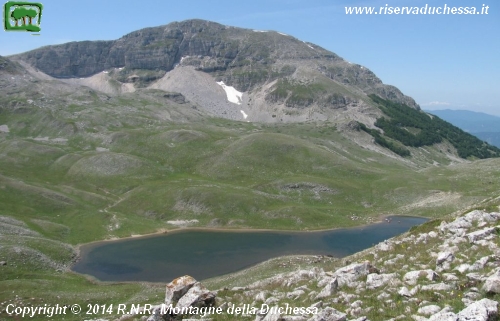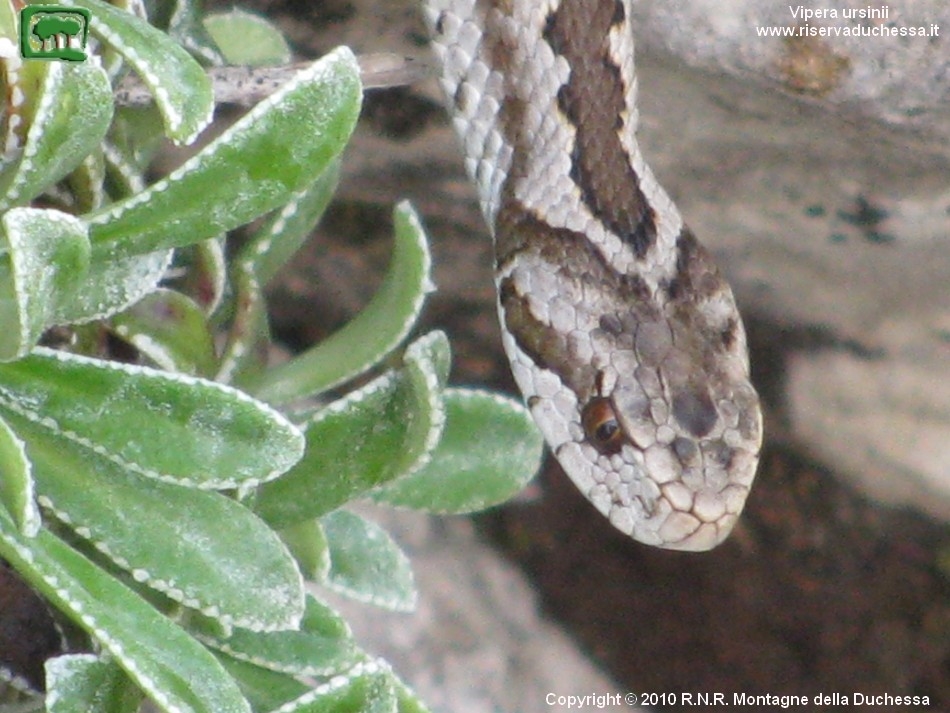Lago della Duchessa
official page in English
The Lago della Duchessa, of karst origin, located at 1788m a.s.l. (coordinates in decimal degrees: latitude and longitude 42.187461°N, 13.348039°E) in a glacial basin dominated by imposing peaks (Monte Murolungo 2184m, Monte Morrone 2141m), it is one of the highest lakes in the central Apennines.

The lake is within the SIC (Site of Community Importance) called "Monti della Duchessa - Area sommitale" and identified by the code IT602020. SICs are defined according to the Community Directive number 43 of 21 May 1992,
(92/43/EEC), better known as "Habitat Directive".
The Directive issued by the European Council relates to the conservation of natural and semi-natural
habitats and wild flora and fauna. In Italy the Habitat Directive has been implemented by the
D.P.R. 357/97 and from the subsequent
D.P.R. issue 120 of 12 March 2003.
.jpg)
At the end of the procedural procedure, the two SICs, present within the Reserve, "Monti della Duchessa - Area Sommitale" (identification code: IT6020020) and "Monti della Duchessa - Bosco di Cartore e Vallone del Cieco" (identification code : IT6020021), have been designated, by decree of 6 December 2016 of the Ministry of the Environment and of the Protection of the Territory and the Sea, published in the Official Journal of the Italian Republic, General series - number 301 of 27-12-2016, Special Area of Conservation (SAC), with code (SAC) IT6020020 for the first and (SAC) IT6020021 for the second. For more information see: http://natura2000.eea...
The karst origin of the lake is recognized in the two dolines, which give it the characteristic shape of eight. The lake is not fed by springs or a river and the water level is linked to meteoric factors (rain and snow), the water cycle and the seasonal exploitation by domestic animals in the mountain pastures (sheep, horses and cattle). Another factor that severely limits the water level is a sinkhole on the northwestern shore. The water in periods of heavy rain or after the snow melts in spring, reaches the level of the sinkhole and rushes into it. Classified as a shallow lake, it has an extension of about 4 hectares with a perimeter of about 973m, of course these data vary according to the level of annual rainfall (rainy and snowy).
.jpg)
In the body of water there is the crested newt, Triturus carniflex (Laurenti, 1768) which here reaches one of its maximum aptitudes, at least for Lazio (Anfibi e rettili del Lazio, © 2000, all rights are due to Fratelli Palombi Editori). The Triton (species protected by Directive 92/43 / EEC) is an amphibian and as with many species of this class of vertebrates, its reproduction is linked to water. The reproductive period begins in winter and ends with the return to the mainland which occurs in late spring. The reproductive season can undergo, at these altitudes, a slip, in fact the lake can remain frozen even in the first months of spring, in fact, the lake can remain frozen even in the first months of spring and larvae of the species have also been observed in July. (from: Anfibi e rettili del Lazio, © 2000, tutti i diritti spettano alla Fratelli Palombi Editori).
.jpg)
In the Lake area, the altitude grassland, characterized by the largest extension of mesophilic grassland continues to Festuca nigrescens of the whole Velino-Duchessa massif, with limestone rocks and dwarf juniper pulvins, hosts the Orsini's viper (Vipera ursinii) present in Italy only in some areas of the central Apennines.

The flora is well represented by the presence of very rare and threatened plant species and communities. Among the threatened species there is the Ranunculus trichophyllus and among the very rare: Saxifraga adscendens ssp. parnassica, Saxifraga ampullacea, Saxifraga porophylla, Alchemilla plicatula, Dryopteris villarii, and Gnaphalium diminutum. Endemic species are also numerous: Ranunculus apenninus, Phleum ambiguum, Saxifraga ampullacea, Saxifraga porophylla, Cirsium tenoreanum, Gnaphalium diminutum.
